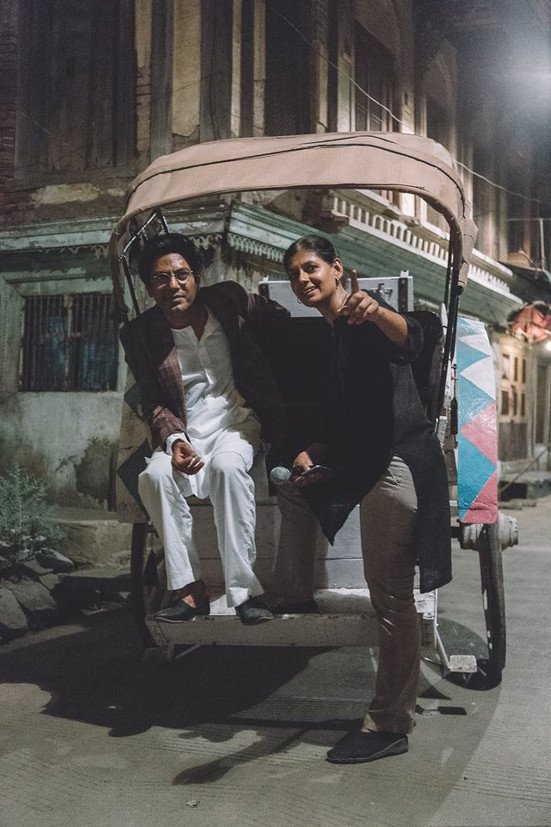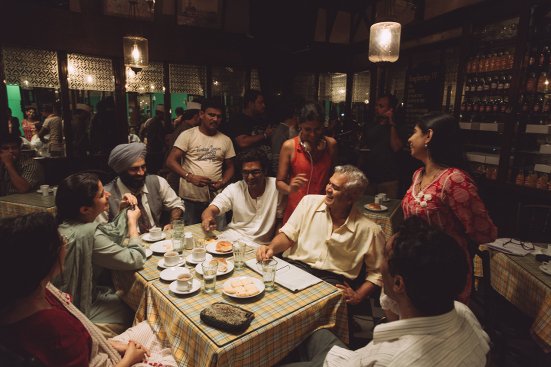![[Untitled]](http://www.minority-review.com/wp-content/uploads/2018/10/Untitled.jpg)
While the Hindi silver screen has adapted many famous stories, seldom has it shown the lives of the writers behind them. So when the film Manto on Saadat Hasan Manto’s life came out, it stood a class apart. Our reporter, Swati Sharan, met director Nandita Das at the Toronto International Film Festival 2018 and got her to share glimpses of what it took to recreate a period biopic
How did you embark on your journey for the film Manto?
For years I thought of making a film based on Manto’s short stories, even before I made my directorial debut, Firaaq. But it was only in 2012, during Manto’s centenary celebrations, when a wide variety of his works were translated, and much was written about him, that I delved deeper into his essays and other work, which helped expand the idea beyond his stories. It took me five years to feel equipped, both emotionally and creatively, to tell this story that needed to be told.
![[manto]](http://www.minority-review.com/wp-content/uploads/2018/10/manto.jpg)
Nawazuddin Siddiqui in Manto
What did the film research involve?
It has taken more than four years of research and writing, and two years of preparation and filmmaking to make it: from 2012 till 2018 May, when the film finally was completed and premiered at Cannes.
I have read Manto quite extensively and also read about him, but given how prolific he was – he wrote short stories, essays, radio plays and sketches – and how much has been written about him, it was not possible to be exhaustive.
I feel fortunate that I had the opportunity to speak at length with his daughters and his grand-niece, the eminent historian Ayesha Jalal. Ayesha’s book, ‘Pity of Partition – Manto’s Life, Times, and Work across the India-Pakistan Divide’, and the one she wrote on Manto’s centenary along with Manto’s youngest daughter, Nusrat Jalal, were some of the first gifts I got from the family. Manto died young at age 42. So very few who had actually met him are still alive.
There were, however, two people who did: one is his sister-in-law, who also features in the film, Zakia Jalal, and the other was Mr. Intizar Hussain, a well-known Pakistani writer, who passed away recently. I spent time with them and of course the daughters and through the process of this film I got close to them. Manto, the husband, the father, the friend, these relationships I could only understand through the important nuggets these individuals shared with me, which no book would have been able to give me.
The whole process of researching and writing was time consuming and hectic but that’s what formed the backbone of the film. It took four long years of research, many books and people’s inputs and several drafts of the script for me to tell this story; one that seems most relevant to our times.

Nawazuddin Siddiqui and director Nandita Das on the set of Manto
One notices the subtleties of Urdu diction changing from Mumbai to Lahore over the years in the film. Was this intentional?
I didn’t want the language to be too difficult, so as not to alienate audiences, and I didn’t want to make it too simplistic, which would not be authentic to the period and the people who spoke it. It was challenging to strike that fine balance, but in the end, I think we managed.
I didn’t grow up in an Urdu-speaking background, and the language I grew up speaking was Hindustani – an amalgamation of Hindi and Urdu, which most people in Delhi speak. So, for the first couple of drafts of the script I had Mir Ali Hussain (a script consultant), who would read to me the writings that were neither translated nor available in Devanagari. I also sought help on the Urdu dialogues from many other people both in Mumbai and Lahore. My own Urdu has improved exponentially thanks to all the reading I have had to do! I have travelled many times to Lahore and find a few things that are differently spoken than they are in the way that Urdu is spoken in India. But the differences have increased over the years. Through my research I found out it wasn’t that different at the time and therefore I have chosen to reflect that reality.

Behind the scenes at an Irani Cafe for the movie Manto
How did you venture to recreate the period of 1940s Mumbai in the Bollywood era or 1950s Lahore?
One of the toughest challenges for me was to recreate 1940s Bombay and Lahore in the midst of modern-day clutter on a budget that did not allow the luxury of extensive visual effects or too many sets. Before I had even found money for the project, I had done several recces to find the right locations. I found some incredible locations hidden in narrow gullis (bylanes), Irani cafes in the most unexpected places and homes that have been frozen in time. Of course, there many that we loved and could not shoot in because they were too expensive or were being repainted or people were too scared to give them for a shoot. The other challenge was to find Lahore in India. We couldn’t shoot in Lahore as we had initially planned because of the political tensions between the two countries. After an extensive five-city recce, we finally found our Lahore in a small town called Vaso in Gujarat. This journey of finding the right locations was special because it allowed me to go back in time and discover places I would have otherwise never seen.
The extensive research material that we had collected was very useful to share with the key crew for them to be able to recreate the costumes and the looks for the various characters and settings. The colour palette was decided along with my cinematographer, Kartik Vijay, and then shared with all departments that impacted the visual language of the film. All the poetry that has been sung in the film is also from that period and my music director, Sneha Khanwalkar, and I spent a lot of time listening to various forms of music that would be true to that period and yet accessible and enjoyable for those listening today.
![[manto2]](http://www.minority-review.com/wp-content/uploads/2018/10/manto2.jpg)
Javed Akhtar with Nandita Das on the set of Manto
You have a lot of known faces in the film. How did you prepare them for their roles?
From the time I thought of making the film, I had a few actors in mind. I always saw Nawazuddin as Manto. His lived-life eyes were perfect to portray Manto’s many contradictions. Nawaz melts into the characters he plays and that was essential to make him a believable Manto. Rasika Dugal was also my first and only choice for Safia, Manto’s wife, after I saw her performance in Qissa. To find Shyam, his best friend, took the longest time as most actors saw it as a ‘second lead’! I reached out to many whose work I admired – most I knew but some I sought out. It has ended up being a fantastic ensemble cast and it would not have been possible without my casting director, Honey Trehan. He found amazing actors to portray real life characters such as Ashok Kumar, K Asif , Faiz Ahmad Faiz, Naushad Sahab and many more.
I picked people I thought would be passionate about the film, those who would understand its intent and be able to convey it. I am overwhelmed that so many actors lent their support; even just to do small cameos. They brought a huge amount of credibility and goodwill to the project. Whether it was Rishi Kapoor in the role of a sleazy producer or Paresh Rawal who despite our political differences, supported both Firaaq and Manto. Or Gurdas Maan, as a distraught father (not easy to imagine him as that!), or Javed Akhtar, making his debut by playing a witness defending Manto in court. They, and many more, worked simply to support the film and for their admiration of Manto.
Read the review of the film Manto here.



0
comments